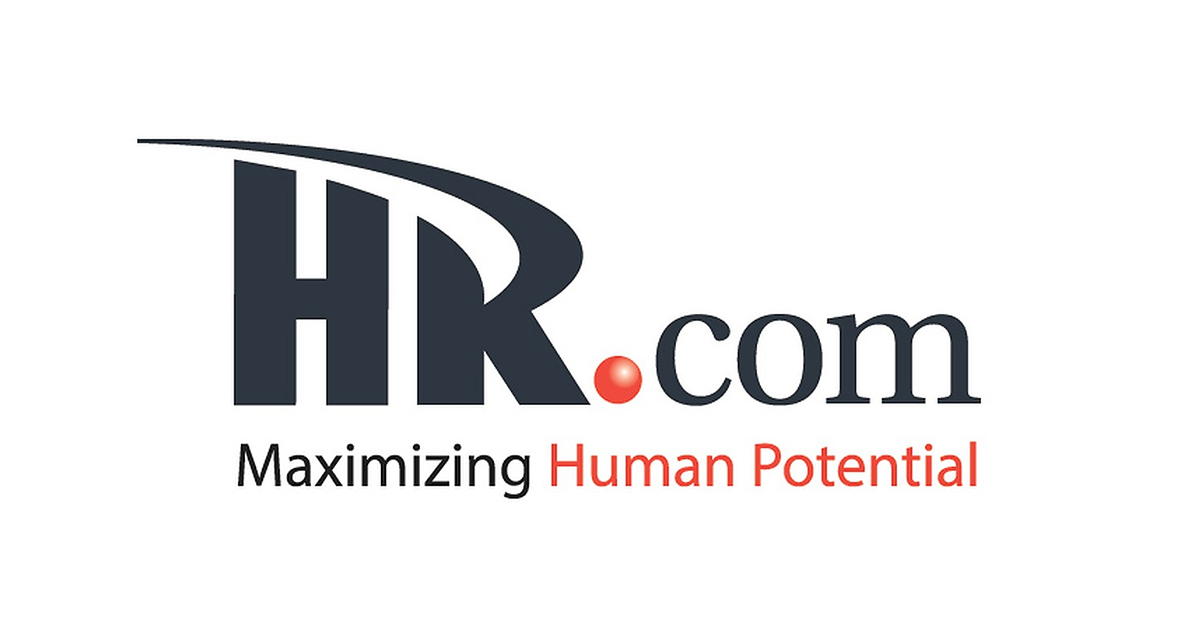Ask any business leader and they’ll tell you that a RIF, which stands for reduction in force, is one of the hardest activities to carry out. Often times good employees are hit by these decisions through no fault of their own, and the resulting morale issues can doubly affect the workplace in a negative way. That said, there are times when a RIF is an essential part of business continuity and operations. Today we’re going to explore some of the key things to know about RIFs.
What is a RIF (Reduction in Force)?
A RIF, or reduction in force, is a time when employers have to reduce their employee headcount. This can be a handful of workers or a significant population. There are a variety of reasons why these might occur. For instance, maybe the company lost a large contract or a product has not sold as well as was expected, which means the workforce planning forecast was too high. Also, in times of economic downturn, it’s not uncommon for companies to face the tough decision of implementing a RIF. This measure is often to align spending with decreased revenues and secure financial stability. As challenging as these decisions are, it’s crucial that they are handled with the utmost respect and fairness.
Reduction in Force Guidelines for Employers
In order to make good decisions in the midst of a RIF, employers need all the data they can get. While it makes sense to use performance data to drive decisions (keeping the highest performers, of course), the reality is that doesn’t always work out as expected. What if the highest performers also earn the bulk of the compensation? Is it worth trading two lower-level workers for one higher-level worker? What about skills? Can the remaining team members fill in gaps and flex to meet the needs of the business, or do they lack the requisite skills?
Clearly the decision requires a more holistic view of employee information. Types of necessary data include:
- Performance scores
- Productivity metrics
- Compensation rate
- Protected status
- Skills and competencies
By looking more broadly at the entire set of information, employers can make the best decision about which workers to retain.
Strategically Approaching the RIF Process
When faced with the challenging decision of a reduction in force (RIF), it’s crucial to approach the process strategically to mitigate negative impacts on the organization and its employees. This involves careful planning, clear communication and adherence to legal standards to ensure compliance and maintain trust within the company.
Here are some critical strategies to consider when you’re planning and executing a RIF:
Ensure Compliance with Legal and Regulatory Requirements
First things first, get your legal ducks in a row. Before you initiate a corporate RIF, it’s crucial to consult with legal experts to fully understand the relevant federal, state and local laws. This step is about more than just compliance; it’s about adhering to reduction in force guidelines to protect your organization from potential legal fallout, such as claims of wrongful termination or discrimination.
Maintain Open and Honest Communication
Transparency is your ally here. It’s essential to communicate with your employees openly and honestly about the reasons for the RIF and what it specifically means for them. Clear communication can help maintain trust, reduce uncertainty, and mitigate the stress that comes with such announcements.
Develop a Comprehensive Action Plan
A RIF isn’t something you want to improvise. Outline every step, from how you’ll select which positions are affected to the support you’ll offer those who are exiting. Following structured reduction in force guidelines ensures the process is smooth and respectful to all parties involved.
Offer Support and Resources to Affected Employees
Providing robust support—think severance packages, career counseling and job placement services—can make a world of difference to those impacted. This support not only aids them in their transition but also bolsters your company’s reputation as a caring and responsible employer.
Evaluate the Impact on Remaining Employees
A reduction in force doesn’t just affect those who leave; it also impacts the morale and productivity of those who stay. It’s vital to put mechanisms in place to support remaining employees, help them adjust to changes, and ensure they feel valued. This might mean redefining roles, offering additional training, or simply ramping up your internal communications to keep everyone informed and engaged.
By adhering to these guidelines, your organization can conduct a RIF that is not only compliant and respectful but also constructive, laying a solid foundation for the resilience and growth of your company in the future.
Reduction in Force Legal Requirements
Ahead of a reduction in force (RIF), it’s absolutely critical for employers to meticulously navigate the complex landscape of legal requirements. A key piece of legislation in this area is the Worker Adjustment and Retraining Notification (WARN) Act. This federal law requires businesses with over 100 employees to provide a 60-calendar day RIF notice before implementing plant closings or mass layoffs. Following the WARN Act isn’t just about ticking a box; failing to comply can lead to hefty financial penalties, including up to 60 days of back pay and benefits for each affected employee.
For smaller businesses, the legal terrain shifts slightly. Although they might not be covered by the WARN Act, it’s vital for these employers to familiarize themselves with state-specific regulations, often known as Mini-WARN Acts. These laws may impose similar RIF notification requirements for smaller operations, underscoring the importance of managing legal risks effectively. A sample WARN letter template is available from SHRM for further reference, providing a framework for compliance with these notification requirements.
Another critical legal consideration is the Civil Rights Act of 1964. This landmark legislation ensures that RIF decisions are free from discrimination based on race, color, religion, sex or national origin. Employers must ensure that their RIF strategies are based on legitimate business needs and are not tainted by discriminatory practices, which could lead to claims of wrongful discharge.
Attention must also be paid to state-specific legislation, especially the various versions of Mini-WARN Acts, which may set different standards regarding employee thresholds or notice periods compared to federal law. A deep understanding of both federal and state reduction in force laws is essential for full compliance.
Beyond the legal requirements of notification, thoughtful consideration of severance packages and benefits continuation under COBRA can play a strategic role in a RIF process. Offering severance can help alleviate the financial impact on affected employees and potentially reduce the likelihood of legal challenges. Moreover, ensuring that employees are informed about their rights under COBRA to continue their health insurance coverage is not only a legal obligation but also reflects the company’s commitment to supporting its employees during these transitions.
Navigating the complexities of a RIF with a thorough understanding of the associated reduction in force requirements ensures that companies can manage these challenging times with integrity and respect for their workforce, maintaining compliance and upholding their reputation.
Mitigating RIF Risks
One of the key risks of a RIF is disparate impact, meaning the decision adversely affects one protected group more than another segment of employees, even if the decision was neutral in design. A common example pertaining to RIFs is when workers are laid off based on compensation rates, which almost always hits older workers harder as they have more seniority and higher pay.
In order to mitigate this type of risk, employers should consider a few points:
- Managers and those involved in the decisions should be very careful to avoid using any language that could be construed as negative when discussing a specific demographic (minorities, older workers, etc.)
- The four-fifths rule provides a mathematical formula for evaluating the impact and determining if disparate impact truly occurred. Read more on this calculation on the Adverse Impact website.
- Finally, proving the decision requires some exchange and dialogue. If a plaintiff can prove disparate impact, the employer must show how the decisions were job-related and due to business necessity. The plaintiff must then try to prove that there was another alternative option that would have met the goals without having disparate impact on the protected class.
One specific way to mitigate the risk of a RIF is by leveraging technology that supports the change, providing a high-level perspective on the outcomes of the process. For instance, does it track the workers that were reassigned or impacted by the change? Does it provide an overview of the demographics affected to help ease adverse impact concerns? Instead of attempting to manage these issues within a spreadsheet, using dedicated technology can help to intuitively avoid problem areas and highlight data points to consider throughout the process.
This is a complex issue, but think about it holistically: employers facing a RIF are already struggling with some unforeseen challenge. Making sure to lay out the reduction in such a way that it avoids legal issues and challenges is the best way to avoid further strain on the system and its leadership.
How Do RIFs Affect Employees?
Reductions in force (RIF) are profoundly impactful events, not just for the employees who leave but also for those who stay. For those departing, the effects are immediately felt—financial strains and emotional stress are common as they face the loss of steady income and the upheaval of their professional lives. How a RIF is executed, adhering to reduction in force guidelines and processes, can significantly influence their future interactions with the company, shaping their views and potentially affecting the company’s reputation in the broader industry.
For the employees who remain, the aftermath of a RIF can be equally challenging. Often, they face increased workloads, absorbing duties once managed by former colleagues, which can escalate stress levels and lead to burnout. The emotional impact of losing close colleagues and friends cannot be underestimated either; it can severely affect workplace morale and productivity. It’s crucial for employers to recognize these impacts and proactively support the morale of the remaining workforce to sustain a productive and positive work environment, in line with reduction in force reasons.
Enhancing Support Through Outplacement Services
Providing outplacement services is an essential strategy for employers during a RIF. These services play a critical role in helping laid-off employees transition to new job opportunities. From refining resumes to honing interview skills, outplacement support can drastically reduce the period of unemployment for these individuals. Moreover, offering such support not only reflects positively on the employer’s brand but also demonstrates a genuine commitment to the welfare of employees, even in times of organizational change.
For the remaining employees, seeing their former colleagues receive this kind of support can be reassuring. It helps maintain morale and trust in the organization, reinforcing a positive corporate culture even amidst challenging times.
By carefully considering these aspects and implementing supportive measures like outplacement services, employers can soften the harsher impacts of a reduction in force. This thoughtful approach benefits not just those directly affected but also helps in preserving the company’s internal morale and reputation, which are vital for sustained success.
Post-Reduction In Force Process
After implementing a force reduction, organizations must conduct a thorough post-RIF assessment to ensure their recovery and future strategic direction. This phase is crucial for reinforcing resilience and demonstrating a continued commitment to remaining employees.
To start, conduct a thorough audit of the RIF process. This involves a meticulous review of how the RIF was communicated and executed, ensuring adherence to the most current reduction in force guidelines and understanding the broader RIF meaning in business. It’s also important to evaluate the effectiveness of any technology or systems utilized during the RIF to pinpoint opportunities for technological enhancements or better integration in future operations.
Another vital step is to engage in meaningful dialogue with the remaining employees. Rather than limiting feedback to exit interviews with those who are leaving, this should include structured discussions with current employees. This approach helps gauge morale, gather insights on how the RIF was handled and collect actionable feedback to improve the organizational culture moving forward. Such engagement is key to fostering a supportive environment and can drive significant improvements in employee engagement and retention strategies.
Next, effective future planning is critical. More than just filling vacancies, this strategy requires a strategic reassessment of the organization’s talent needs to align with long-term goals. Developing a dynamic workforce plan should focus on upskilling current employees and reshaping job roles to meet evolving industry demands. Additionally, implementing a robust internal mobility program promotes career development from within, helping to fill critical roles and motivate employees.
Finally, initiate regular follow-up assessments that monitor the RIF’s long-term impacts on company performance and employee well-being. This ongoing evaluation is crucial for adjusting workforce strategies and ensuring alignment with the company’s evolving objectives.
By embracing a thoughtful and structured approach to the post-RIF process, organizations can more effectively navigate the complexities of workforce management. This ensures compliance, agility and preparedness for future challenges, aiding in recovery post-RIF and enhancing the company’s reputation as a resilient and employee-centric organization.
HR Acuity Can Support You Through a RIF
Navigating through a Reduction in Force (RIF) presents unique challenges and risks for any organization. HR Acuity provides essential support to mitigate these risks and manage the RIF process with precision and care. Our employee relations case management software ensures that every step of the RIF is documented thoroughly, maintaining compliance and minimizing legal exposure. By capturing detailed, date-stamped records of all RIF-related actions and decisions, HR Acuity helps organizations uphold transparency and accountability, crucial for justifying decisions if they are ever scrutinized.
During a RIF, it’s vital to support not only those who are leaving but also those who remain. HR Acuity’s managER solution is designed to guide managers through the RIF process, ensuring that they follow the necessary steps and maintain consistency across the organization. This support helps in managing the emotional and professional impacts on the remaining team, which is essential for maintaining morale and productivity post-RIF.
After a RIF, it’s important to monitor the ongoing impact on the organization and its culture. HR Acuity’s analytics and reporting capabilities provide valuable insights into the effects of the RIF, allowing companies to track trends and feedback from remaining employees. This data-driven approach enables organizations to adjust their strategies as needed, ensuring alignment with long-term business objectives and fostering a resilient, supportive work environment. Through these comprehensive services, HR Acuity empowers organizations to handle the complexities of a RIF with confidence and strategic foresight.
To explore how HR Acuity can support your organization’s ability to manage a Reduction in Force effectively and with the utmost care, schedule a demo today.




